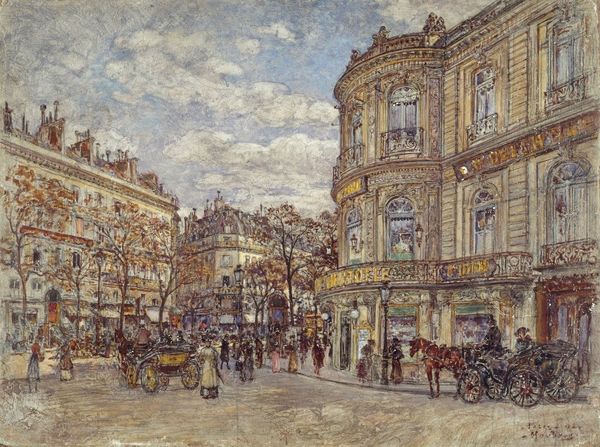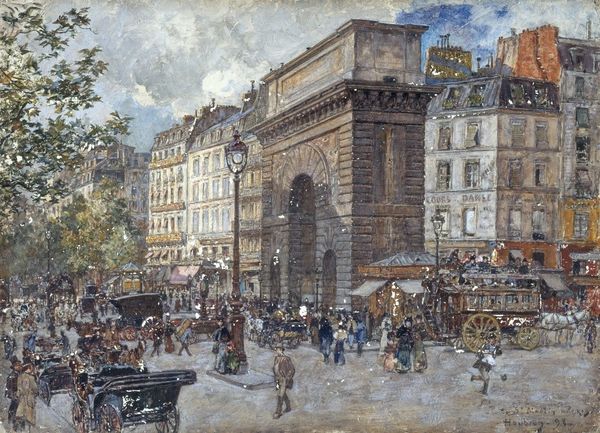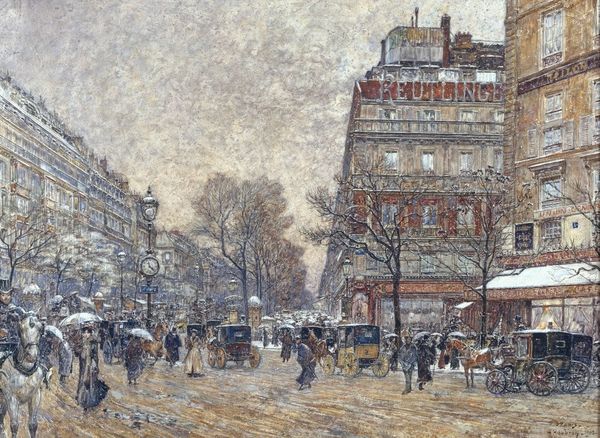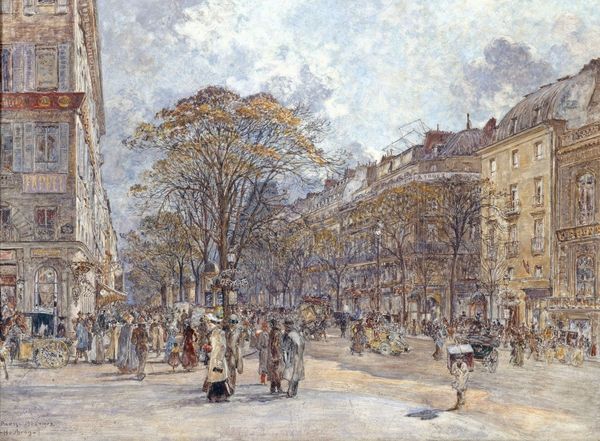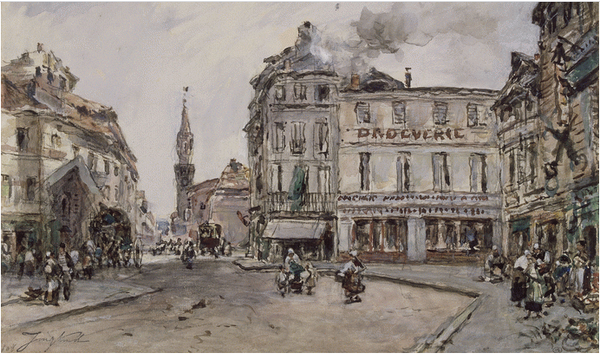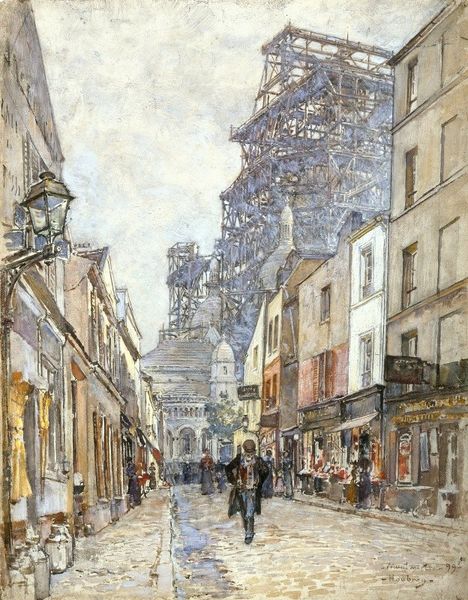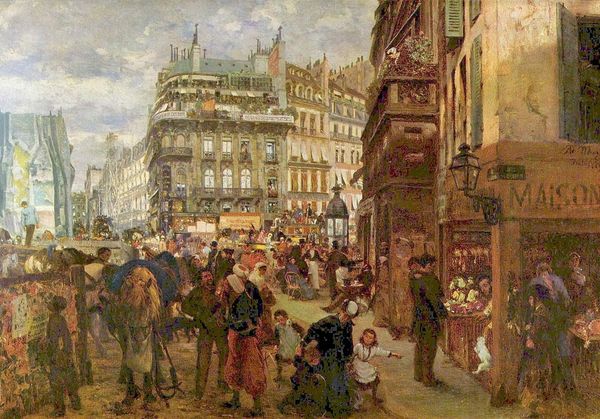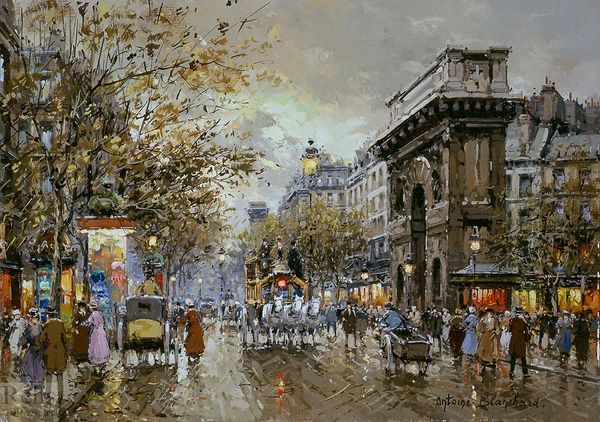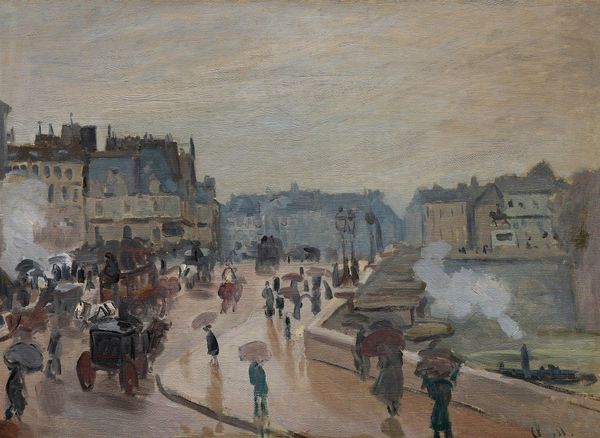
Copyright: Public Domain: Artvee
Editor: Here we have Frédéric Houbron's "La rue Réaumur et le chevet de l’église Saint-Martin-des-Champs," painted in 1900. It's quite evocative – the buildings and sky almost seem to merge. It feels very urban but softened somehow by the watercolors. What do you see in this piece? Curator: The work exemplifies the principles of Impressionism. Note the emphasis on capturing fleeting moments, focusing on the interplay of light and color, rather than precise representational accuracy. Editor: Yes, you can really see that in the sky. But what about the darker elements? Do they detract from the Impressionistic intent? Curator: Consider the tonal range and the interplay between the muted, almost somber palette and the brighter highlights used to depict the bustling street life. Observe the loose brushwork – how it contributes to a sense of spontaneity. Could this express both excitement and indifference in the modernization of Paris? What does the flatness suggest about how we consider semiotics, here? Editor: So, you are saying it may show both a vibrant modernizing street, and an underlying apathy? That makes a lot of sense. I'd assumed it was just an exercise in light and colour, a sort of… detached observation. Curator: Detachment can be a conscious artistic choice, amplifying the effect. It reframes perception itself. Think about the artist's structural use of linear perspective against these chaotic movements. Editor: It's amazing how much there is to unpack just by looking closely at the composition itself. Thank you for making it so clear. Curator: Indeed. The genius resides in the skillful articulation of form through the strategic use of color and light.
Comments
No comments
Be the first to comment and join the conversation on the ultimate creative platform.
